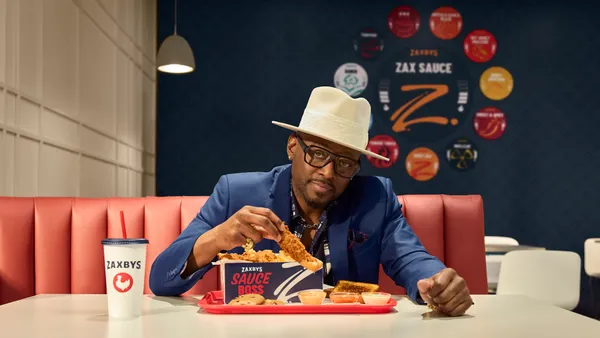A so-called "Mediapalooza" shook up adland in 2015-16 when a seemingly historic number of brands put their media accounts up for review, with an estimated $26 billion in spending collectively on the move. In the first half of 2018, high-profile account reviews and account changes from marketers, including American Express, Ford and Fiat Chrysler, has lent credence to some analyst speculation that this year will mirror, and potentially surpass, the original Mediapalooza.
But is a sharp uptick in reviews this year really an indication of another cataclysmic industry event, or just a signal that traditional ad agencies are feeling a greater pinch from cyclical business pressures as they continue to adjust to digital disruption and a growing number of outside competitive threats? The answer might be somewhere in the middle.
It's not uncommon for agency pitch cycles to run every three or four years, Greg Portell, a lead partner of the consumer industries and retail practice arm at the strategy and management consultancy firm A.T. Kearney, told Marketing Dive. Other experts interviewed for this piece noted that pitches are a good means to test the market and assess whether partners are the right fit for a brand's requirements. However, there's also a sense that long-standing issues continue to be band-aided over rather than properly fixed by agencies, leading brands to reinvent their approach to marketing services altogether.
"There's a huge amount of discussion within the industry about the old topics that we talked about for many years, whether that's transparency, viewability, ad fraud or data," Gerhard Louw, the head of international media management at Deutsche Telekom AG, which owns the wireless carrier T-Mobile, told Marketing Dive in a phone interview. "Clients are, I wouldn't say fed up, but getting to a point where they're saying these issues haven't been addressed.
Our agencies, as agents who are supposed to act on our behalf and in our best interests, they haven't helped us to solve these problems," Louw said, speaking on agencies broadly and not his company's partners, specifically. "We've either a.) haven't solved them or b.) have had to solve them on our own. The level of love or trust [is] at this point pretty low."
Changing hands
Looking at the trend lines, it's perhaps unsurprising that 2018 has made for another notable year in terms of pitches and agency account reviews. The rumblings were apparent last fall, when high spenders like Amazon, AB InBev and Lego put their accounts under review.
"The past three years have been full of stories talking about how the market has changed. It's natural for the advertisers to want to know if their agencies can operate in that new environment. "

Greg Portell
Lead partner, consumer industries and retail, A.T. Kearney
The momentum only appeared to pick up in the first half of 2018, with AmEx, Fiat Chrysler, Shell, Mars, Puma and GSK, among others, putting parts or all of their media businesses up for review. Other large media accounts, from names like HSBC, KFC, Macy's and Marriott, have changed agency hands in recent months.
"It's both significant and expected. You have a significant amount of dollars that are being invested and moving around," A.T. Kearney's Portell said.
"There's a cyclical piece to it that's hard to dismiss, but the reality is, we all cover the media market and talk about how it's changed," he added. "New platforms jump up, digital grows, linear TV changes, programmatic starts to go into video — the past three years have been full of stories talking about [these issues]. It's natural for the advertisers to want to know if their agencies can operate in that new environment."
WPP, by virtue of being the world's largest ad holding company and recently losing founder and leader Martin Sorrell, the man who helped turn what was once a wire basket company into a business empire, has felt the churn particularly sharply. Ford, which has worked with WPP for decades and is estimated to have generated more than $500 million in annual revenue for the agency, put large parts of its account up for review in April. The hits kept coming in May, when AmEx decided to do the same for its global media business after 20 years with WPP's Mindshare. Later that month, Mindshare also lost HSBC's estimated $400 global million media account to Omnicom.
But WPP's struggles, though significant, are far from unique, and if anything might serve as a bellwether for the agency landscape overall.
"They're the largest media agency, so they're going to take the disproportionate amount of incumbent positions," Portell said. "All of these companies are struggling with how to integrate their portfolio assets."
No clear catalyst
Indeed, what's potentially worrying for media agencies broadly is that there's less of a clear catalyst for change than in the past. While a number of factors contributed to the original Mediapalooza, the event's global scope and longevity were attributed by some to a bombshell report by K2 Intelligence commissioned by the Association of National Advertisers that uncovered widespread non-transparent agency practices related to the handling of client fees and cash rebates.
In 2018, many of the frustrations stemming from K2's report linger, and CFOs and other brand executives want greater assurances that their money is being spent in the right way, per Portell. Coupling that with the encroachment from newer competitors like global management consultancies and the challenges of a rapidly evolving digital media landscape makes for a particularly potent combination — one that could throw into question the value of what media agencies have to offer in their current model.
"Media buying is shifting toward programmatic and formulas — that's very different than upfront parties and figuring out how to have a glitzy ad campaign," Portell said, posing a hypothetical: "As a marketer who owns a brand, I need someone who can inspire me but also make sure I know what the trade-offs are of different channels. It's an incredibly difficult balance."
Trimming the rosters
The move away from parties and glitz has been reflected in a smaller, quieter presence for agencies at the events and in the conversations they used to dominate. Deutsche Telekom's Louw noted a "complete lack" of agencies at some of the Cannes Lions advertising festival this year. Attendance for Cannes Lions was estimated to be down 20-25%, in part due to the absence of agencies, including Publicis Groupe, which took the year off to focus on developing its artificial intelligence platform Marcel. Revenue for the 2018 show dipped 9%, according to Ascential, the organization that puts on the festival.
"[At Cannes Lions] there was a complete lack of agencies. It's interesting to see [how] the agencies, certainly the media agencies, weren't very present."

Gerhard Louw
Head of international media management, Deutsche Telekom AG
Tensions have also manifested sharply in agency-client relationships. Seventy-four percent of major multinational marketers are reviewing their current agency arrangements, according to a recent report by Observatory International and the World Federation of Advertisers (WFA), whose members include companies like Procter & Gamble (P&G), Nestlé and Mastercard. The report, titled "The Future of Agency Rosters," found that brand clients rate their current arrangements, on average, at 5.7 on a 10-point scale gauging marketing service providers’ "fit for purpose." Cited shortcomings extended beyond the media business to encompass areas like marketing technology and a demand for more specialist shops.
"It's about people starting to look at how they can start to readdress the creative process [...] but within the whole integrated roster that you have at your disposal," Robert Dreblow, the global head of marketing services at the WFA, told Marketing Dive. "It feels to me that some of these questions are much bigger picture rather than being focused more on the media side.
"At Cannes [Lions], this was the topic our global CMOs wanted to focus on, around rosters, whereas last year, it was much more about media governance driven by the brand safety challenges," Dreblow added. "It feels like it's higher on our CMO agendas than it has been in the past."
Nearly 60% of marketers surveyed by the WFA reported wanting to slim down their agency rosters, and a handful of big-name marketers are already doing so. P&G has been maybe the most noteworthy example, being the largest brand by media spend in the world. The packaged goods giant plans to cut its agency roster by 50% over the next several years, having already reduced it by 60% since fiscal 2015. Nestlé, another big spender, in April reportedly launched a review to trim the number of its agency partners from eight down to six or even as little as four. It previously reduced the number of digital agency partners it works with from 20 in 2014.
A bespoke approach
Despite the client dissatisfaction uncovered in the WFA report, 82% of marketers noted they still view agencies as relevant to their business operations, but an emphasis was put on flexibility and willingness to evolve.
"Advertisers need to take the lead in developing a new kind of partnership if they truly want to achieve one to one marketing at scale," Roel de Vries, the global head of marketing, communications and brand strategy at Nissan, said in a statement included in the WFA report. "That requires new skills but also involves working closely with their agencies, which often have huge knowledge about the companies they work with."
WFA's Dreblow noted that more traditional agencies are starting to move into consulting services, and might end somewhere in the middle between where they started and what companies like Accenture and Deloitte have to offer. He noted that WFA now has more roster models than actual members, and that that number is only increasing in a reflection of the demand for bespoke services.
"The truth is there are probably as many [agency roster models] as there are WFA members, and that's only increasing. I think that's a reflection of people trialing out new, bespoke approaches that suit their business."

Robert Dreblow
Global head of marketing services, WFA
More brands, including P&G and Unilever, are piloting newer, hybrid models that combine talent from across rival holding groups to try and work out different approaches to creative and media strategies. Deutsche Telekom takes a hybrid approach to handling its media business, but Louw noted there's no ideal model or one-size-fits all approach.
"It will require much more flexibility from the partners," Louw said of the future. "Agencies [...] developed over time to more or less have the same services, and more or less package it in the same way.
Of course, the faces are different and the faces are important because we work in a people-led business. But what they're offering and how they're offering it — front-end, back-end, account management, consolidating, buying — are pretty similar," he added. "The demand from large organizations will be much more differentiated than in the past."
Whatever end result comes of a looming second round of Mediapalooza, some things are concrete: there's no going back to the old ways of things, and the pace of change is unlikely to slow anytime in the near future.
"A lot of it is coming to the realization that we're still applying very old-world techniques in a completely different context and it feels like the time has come to change," Dreblow said. "More questions are being asked, which then has a bit of knock-on effect. Everyone starts asking questions of their own rosters and their own approach."























